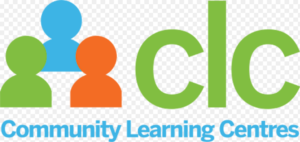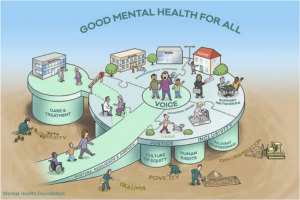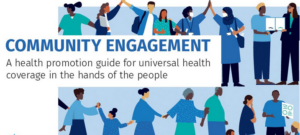CLC – Health Promotion and Community Resource Teaching Project
 The Collaborative Learning Community (CLC) assignment for this project centers on exploring the role of nursing in health promotion and disease prevention.
The Collaborative Learning Community (CLC) assignment for this project centers on exploring the role of nursing in health promotion and disease prevention.
By reviewing objectives from Healthy People 2030 and selecting a topic relevant to public health, the project aims to develop a comprehensive plan that addresses tobacco use and cessation, especially among adolescents and young adults.
This demographic is particularly vulnerable to tobacco-related health issues, which include addiction and chronic diseases. Our goal is to design a health promotion intervention that educates and empowers at-risk youth to quit smoking, reduces health disparities, and improves overall public health outcomes.

Struggling to meet your deadline?
Get your assignment on CLC – Health Promotion and Community Resource Teaching Project done by certified MDs and PhDs in the USA. ORDER NOW!
Topic Selection and Population
The chosen topic for this project is Tobacco Use and Cessation, focusing on a population at risk: Adolescents and Young Adults. This age group is particularly susceptible to tobacco use, as they may be influenced by peer pressure, stress, and a lack of awareness regarding the long-term health consequences of smoking. Early initiation of tobacco use often leads to addiction, making it difficult for young adults to quit as they grow older. Health disparities are evident within this group, as marginalized populations, including those from lower socio-economic backgrounds, often lack access to preventive resources, contributing to higher rates of tobacco use.
Health Disparities and Impact on the Population
Tobacco use has significant adverse effects on adolescents and young adults. It increases the risk of developing chronic respiratory diseases, cardiovascular issues, and various forms of cancer. Additionally, tobacco use often starts at an early age, leading to nicotine addiction that can persist into adulthood. This results in long-term health issues, including diminished lung function, higher vulnerability to infections, and a reduced life expectancy.
Health disparities in this group are particularly pronounced among certain populations, such as low-income youth and racial minorities, who often have fewer resources for quitting smoking. Social determinants of health, including poverty, lack of education, and limited access to health care, exacerbate these disparities, making it difficult for at-risk adolescents and young adults to access effective tobacco cessation programs and services. This results in a cycle of poor health outcomes that continues across generations.
Evidence-Based Approaches for Tobacco Cessation
To address the issue of tobacco use in adolescents and young adults, evidence-based tobacco cessation programs are essential. These programs have been proven to reduce tobacco use and help individuals quit smoking. Effective approaches include:
- School-Based Health Programs: These programs aim to educate adolescents about the dangers of smoking, focusing on preventing initiation in the first place. School-based programs often use peer support, education, and activities to discourage tobacco use, targeting youth in an environment where they spend a significant amount of time.
- Nicotine Replacement Therapy (NRT): For adolescents who are already addicted to nicotine, NRT offers a pharmacological solution that can help ease withdrawal symptoms and reduce the urge to smoke. While nicotine gum, patches, and lozenges are commonly used, their accessibility and safety for minors should be considered in a well-regulated program.
- Health Education: Evidence-based health education strategies emphasize the importance of understanding the risks associated with tobacco use. These educational programs should be integrated into both school and community settings to reach as many adolescents and young adults as possible. Topics can include the physical health risks of smoking, the social consequences, and the economic burden of tobacco addiction.
- Youth Smoking Cessation Resources: Various online resources and hotlines offer tailored cessation support to adolescents and young adults. These programs provide counseling, text messages, and digital platforms that can support behavior change by offering personalized tips and reminders.
- Preventive Health Care for Young Adults: Preventive care is crucial in preventing the initiation of tobacco use. Health professionals should include discussions about tobacco use as part of routine check-ups and screenings for young adults.
By utilizing these evidence-based approaches, health programs can help prevent and reduce smoking among adolescents and young adults, minimizing health disparities and improving overall health outcomes.
Health Education Proposal
Our proposed health education intervention will focus on school-based smoking prevention education and youth smoking cessation programs. This proposal includes a multi-faceted approach to address tobacco use at various levels, from prevention to cessation.
- Interactive Workshops:
Workshops in schools can provide adolescents with the skills and knowledge they need to resist peer pressure and make informed choices about their health. These sessions would use engaging activities, role-playing, and peer-led discussions to help students understand the consequences of tobacco use. - Nicotine Replacement Therapy (NRT):
Adolescents who are already using tobacco may benefit from NRT programs offered within the school setting or through community health services. Counseling and access to NRT can provide young people with the tools they need to quit. - Support Groups:
Support groups led by health professionals, such as school nurses or counselors, can help students quit smoking. These groups will provide a safe space to discuss challenges and successes, share strategies, and receive encouragement. - Community Health Resources:
Schools can collaborate with local health departments, community centers, and non-profit organizations to offer additional resources for students. These may include quitlines, online cessation programs, and local tobacco cessation clinics.
The key focus of this health education program is to increase awareness about the risks of smoking, encourage behavior change, and provide ongoing support to adolescents and young adults who want to quit smoking.
Local and National Health Resources
- Local Initiatives: Local resources like the QuitNow hotline and the Youth Smoking Prevention Program offered by county health departments are valuable tools. The QuitNow hotline offers immediate support and guidance for adolescents and young adults seeking help with quitting smoking, while the Youth Smoking Prevention Program focuses on school-based education and community outreach to reduce tobacco use among local youth.
- National Programs: On a broader scale, national programs such as those led by the American Lung Association and the Centers for Disease Control and Prevention (CDC) play a crucial role in tobacco prevention and cessation. The American Lung Association provides resources for schools and communities to educate youth on the dangers of smoking and the importance of quitting, while the CDC’s Tobacco Control Programs offer funding and technical assistance to local programs that aim to reduce tobacco use among young people.
Role of Interdisciplinary Professionals in Tobacco Prevention
An interdisciplinary approach is crucial for the success of tobacco cessation programs. Involving a variety of health professionals ensures that the program addresses the physical, psychological, and social aspects of tobacco use.
- School Nurses: School nurses play a key role in identifying students who may be smoking and offering support for quitting. They can provide counseling, refer students to cessation programs, and educate students on the dangers of tobacco use.
- Counselors: Mental health counselors can support adolescents in overcoming nicotine addiction, addressing the psychological and emotional factors that may contribute to tobacco use.
- Pediatricians and Family Physicians: These healthcare professionals can monitor the physical health of young people and offer guidance on tobacco cessation. They can provide nicotine replacement therapy (NRT) and monitor the effectiveness of cessation efforts.
- Community Health Educators: These professionals work in local communities to spread awareness about smoking prevention and cessation. They may organize workshops, health fairs, and educational campaigns that target adolescents and young adults.
By working together, these professionals ensure a holistic and comprehensive approach to tobacco cessation that increases the likelihood of success. 
Linking to Health Promotion Frameworks
In alignment with the Healthy People 2030 goals, our intervention aims to reduce tobacco use among adolescents and young adults. Specifically, it supports the Healthy People 2030 objective to reduce the proportion of adolescents who use tobacco products by addressing the root causes of tobacco use and providing accessible, evidence-based cessation resources. By focusing on both prevention and cessation, this project supports the broader goal of improving overall public health and reducing health disparities related to tobacco use.
Target Population and Health Disparities
The primary target populations for this health education plan are at-risk adolescents, youth tobacco users, and young adult smokers. These individuals often face significant health disparities related to tobacco use, including limited access to cessation resources and heightened vulnerability due to socioeconomic or cultural factors.
Call to Action and Public Health Impact
The ultimate goal of this project is to reduce tobacco use and smoking-related health issues among adolescents and young adults. By implementing effective, evidence-based health education and tobacco cessation programs, we can improve health outcomes, reduce disparities, and contribute to the achievement of the Healthy People 2030 goals. These efforts will have a lasting impact on the health and wellness of young people, helping them lead healthier lives free from tobacco addiction.
Conclusion
The CLC project on tobacco use and cessation emphasizes the importance of interdisciplinary collaboration, evidence-based approaches, and community involvement in addressing tobacco-related health disparities among adolescents and young adults. By integrating health education, local and national resources, and targeted interventions, we can significantly reduce the impact of tobacco use on this at-risk population. With continued support from health professionals, community organizations, and policymakers, we can move closer to the goal of reducing tobacco use and improving public health outcomes for future generations.
The Rubric

Dont wait until the last minute.
Provide your requirements and let our native nursing writers deliver your assignments ASAP.
| Course Code | Class Code | Assignment Title | Total Points | |||
| NRS-429VN | NRS-429VN-O502 | CLC – Health Promotion and Community Resource Teaching Project | 160.0 | |||
| Criteria | Percentage | Unsatisfactory (0.00%) | Less than Satisfactory (75.00%) | Satisfactory (79.00%) | Good (89.00%) | Excellent (100.00%) |
| Content | 100.0% | |||||
| Approved Topic, Associated Population and Health Disparity | 10.0% | Topic and associated population selected is not approved; topic and associated population are not relevant to the scope of the assignment. Topic and associated population are omitted. | Approved topic and associated population are partially presented. It is unclear how the topic adversely affects the selected population. Health disparities are partially described, or are not relevant to selected population. There are significant inaccuracies. | Approved topic and associated population are summarized. A general correlation of how the topic adversely affects the selected population is presented. Relevant health disparities are summarized. There are some inaccuracies. More evidence or rationale is needed for support. | Approved topic and associated population are described. A correlation of how the topic adversely affects the selected population is established and discussed. Relevant health disparities are discussed. There are minor inaccuracies. Some evidence or rationale is needed for support. | Approved topic and associated population are thoroughly described. A strong correlation of how the topic adversely affects the selected population is established and discussed in detail. Relevant health disparities are clearly presented and discussed. Strong evidence and compelling rationale is offered for support. |
| Evidence-Based Approaches to Optimize Health for Population | 10.0% | Evidence-based approaches to optimize health for this population are not presented. | Evidence-based approaches to optimize health for this population are partially presented; some approaches presented are not evidence-based, or are not relevant for this population. Explanation of how these approaches minimize health disparity is incomplete, or are not relevant for the affected population. There are significant inaccuracies. | Evidence-based approaches to optimize health for this population are summarized; it is unclear how some approaches presented are relevant for this population. A general explanation of how these approaches minimize health disparity is presented. There are some inaccuracies. More evidence or rationale is needed for support. | Evidence-based approaches to optimize health for this population are discussed. Explanation of how these approaches minimize health disparity is presented. Some evidence or rationale is needed for support. | Evidence-based approaches to optimize health for this population are discussed, and approaches are accurately represented and highly relevant to the population. Explanation of how these approaches minimize health disparity is well-developed. Strong evidence and rationale are provided throughout. An understanding of the importance of evidence-based approaches in the optimization of health for an at-risk population is demonstrated. |
| Proposal for Health Education for Family-Centered Health Promotion CLC – Health Promotion and Community Resource Teaching Project | 10.0% | A proposal for health education for a family-centered health promotion to address the issue for the target population is omitted. The proposal is not supported by evidence-based practice. | A proposal for health education for a family-centered health promotion to address the issue for the target population is partially presented. The proposal is not entirely relevant to the target population. The proposal requires more support relevant to evidence-based practice. There are significant inaccuracies. | A proposal for health education for a family-centered health promotion to address the issue for the target population is presented. It is generally supported by evidence-based practice; there are some inaccuracies, or some areas need more support using evidence-based practice. Overall, the proposal is relevant to the target population. | A proposal for health education for a family-centered health promotion to address the issue for the target population is presented. It is supported by evidence-based practice and relevant to the target population. There are minor inaccuracies. | A well-developed proposal for health education for a family-centered health promotion to address the issue for the target population is presented. It is strongly supported by evidence-based practice and highly relevant to the target population. The ability to apply evidence-based practice to health education for a target population is clearly demonstrated. |
| Resources and Organizations for Proposed Education Plan | 5.0% | Resources and organizations to support the proposed education plan are omitted. | One health-related organization for the selected topic is presented. The profile is incomplete, or it is unclear how the organization is relevant to the focus topic. Two resources (national or local) are presented. It is unclear how the resources are supposed to be used, or how the resources are relevant to the focus topic. | A general profile for a health-related organization relevant to the selected topic is summarized. Two relevant resources (national or local) are presented, and there is a general explanation for how the resources are supposed to be used by the patient or provider. | A general profile for a health-related organization relevant to the selected topic is presented. Two relevant resources (national or local) are presented, and there is an explanation for how the resources are supposed to be used by the patient or provider. | A general profile for a health-related organization relevant to the selected topic is well presented. Two relevant resources (national or local) are presented, and there is a clear explanation for how the resources are supposed to be used by the patient or provider. |
| Interdisciplinary Health Professional Involvement | 5.0% | Interdisciplinary health professionals important to the health promotion are not included. | At least one significant interdisciplinary health professional is presented. It is unclear how the professional important to the health promotion, and what the role of the professional would be. Support for the suggested member is needed. | Some significant interdisciplinary health professionals are presented. A summary of their role and importance to the health promotion is provided. Some support for the suggested members is needed. | Key interdisciplinary health professionals are presented A discussion of their role and importance to the health promotion is provided. | All significant interdisciplinary health professionals are presented. A clear discussion of their role and importance to the health promotion is provided. |
| Presentation of Content | 40.0% | The content lacks a clear point of view and logical sequence of information. Includes little persuasive information. Sequencing of ideas is unclear. | The content is vague in conveying a point of view and does not create a strong sense of purpose. Includes some persuasive information. | The presentation slides are generally competent, but ideas may show some inconsistency in organization or in their relationships to each other. | The content is written with a logical progression of ideas and supporting information exhibiting a unity, coherence, and cohesiveness. Includes persuasive information from reliable sources. | The content is written clearly and concisely. Ideas universally progress and relate to each other. The project includes motivating questions and advanced organizers. The project gives the audience a clear sense of the main idea. |
| Layout | 5.0% | The layout is cluttered, confusing, and does not use spacing, headings, and subheadings to enhance the readability. The text is extremely difficult to read with long blocks of text, small point size for fonts, and inappropriate contrasting colors. Poor use of headings, subheadings, indentations, or bold formatting is evident. | The layout shows some structure, but appears cluttered and busy or distracting with large gaps of white space or a distracting background. Overall readability is difficult due to lengthy paragraphs, too many different fonts, dark or busy background, overuse of bold, or lack of appropriate indentations of text. | The layout uses horizontal and vertical white space appropriately. Sometimes the fonts are easy to read, but in a few places the use of fonts, italics, bold, long paragraphs, color, or busy background detracts and does not enhance readability. | The layout background and text complement each other and enable the content to be easily read. The fonts are easy to read and point size varies appropriately for headings and text. | The layout is visually pleasing and contributes to the overall message with appropriate use of headings, subheadings, and white space. Text is appropriate in length for the target audience and to the point. The background and colors enhance the readability of the text. |
| Language Use and Audience Awareness (includes sentence construction, word choice, etc.) | 5.0% | Inappropriate word choice and lack of variety in language use are evident. Writer appears to be unaware of audience. Use of primer prose indicates writer either does not apply figures of speech or uses them inappropriately. | Some distracting inconsistencies in language choice (register) or word choice are present. The writer exhibits some lack of control in using figures of speech appropriately. | Language is appropriate to the targeted audience for the most part. | The writer is clearly aware of audience, uses a variety of appropriate vocabulary for the targeted audience, and uses figures of speech to communicate clearly. | The writer uses a variety of sentence constructions, figures of speech, and word choice in distinctive and creative ways that are appropriate to purpose, discipline, and scope. |
| Mechanics of Writing (includes spelling, punctuation, grammar, language use) | 5.0% | Slide errors are pervasive enough that they impede communication of meaning. | Frequent and repetitive mechanical errors distract the reader. | Some mechanical errors or typos are present, but they are not overly distracting to the reader. | Slides are largely free of mechanical errors, although a few may be present. | Writer is clearly in control of standard, written, academic English. |
| Documentation of Sources (citations, footnotes, references, bibliography, etc., as appropriate to assignment and style) | 5.0% | Sources are not documented. | Documentation of sources is inconsistent or incorrect, as appropriate to assignment and style, with numerous formatting errors. | Sources are documented, as appropriate to assignment and style, although some formatting errors may be present. | Sources are documented, as appropriate to assignment and style, and format is mostly correct. | Sources are completely and correctly documented, as appropriate to assignment and style, and format is free of error. |
| Total Weightage | 100% | |||||
| CLC – Health Promotion and Community Resource Teaching Project |